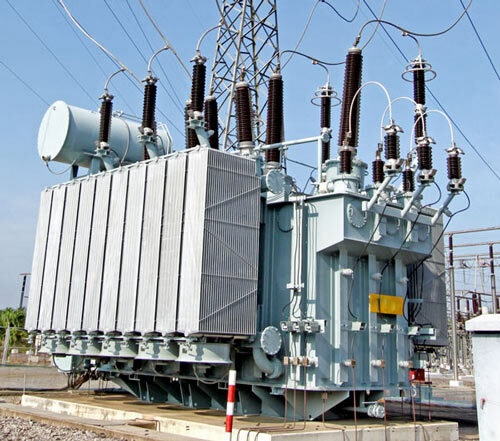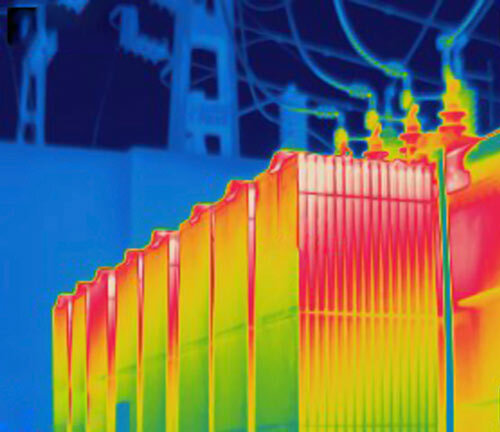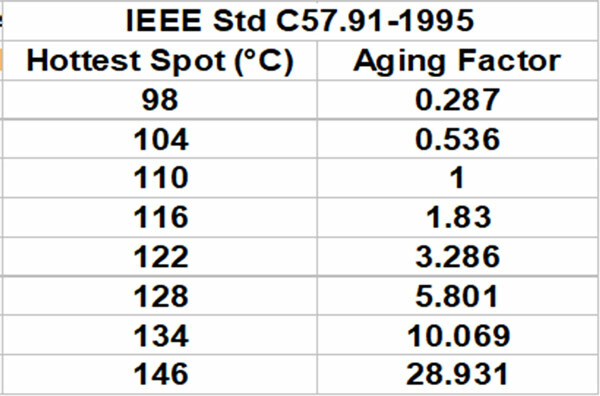Oil-filled transformers used in transmission and distribution systems are rugged units built for long life. They are designed to handle continuous operation at full load and can withstand short-term operation at significantly higher loads.
 A major factor in transformer life is the deterioration of the cellulose insulation. Insulation aging is a time function affected by temperature, moisture content, and oxygen content. Insulation temperature is the dominant parameter. High-quality oils and oil preservation systems minimize the deterioration due to moisture and oxygen.
A major factor in transformer life is the deterioration of the cellulose insulation. Insulation aging is a time function affected by temperature, moisture content, and oxygen content. Insulation temperature is the dominant parameter. High-quality oils and oil preservation systems minimize the deterioration due to moisture and oxygen.
Old transformers often ran for decades with loading well below the nameplate. Several factors are causing transformers to run hotter than in the past. Ambient temperature is increasing in many parts of the world. Server farms, EV recharging stations and other new users are increasing overall electricity demand. To improve asset utilization, utilities are operating transformers with higher loading.
 In power and distribution transformers, the internal temperature is not uniform. The place in the winding that is operating at the highest temperature will typically see the greatest insulation deterioration. The hot-spot (or hottest spot) temperature is determined by the transformer manufacturer and part of the transformer test report.
In power and distribution transformers, the internal temperature is not uniform. The place in the winding that is operating at the highest temperature will typically see the greatest insulation deterioration. The hot-spot (or hottest spot) temperature is determined by the transformer manufacturer and part of the transformer test report.
The 1995 revision of the IEEE Guide for Loading Mineral-Oil-Immersed Transformers (C57.91) defined a thermal method for determining insulation life. It used the hot spot temperature, monitored over time, to calculate a relative aging rate and per-unit life. The aging rate is normalized to 1 at a hot spot temperature of 110°C. This corresponds to a transformer operating at 30°C ambient with an average winding rise of 65°C and a hot spot rise over average winding temperature of 15°C.
 A small temperature change has a drastic impact on insulation life. Based on testing and modeling, the IEEE Guide defined the normal life expectancy of a new transformer to be 180,000 hours (20.55 years). This is for continuous operation at 110°C hot spot temperature. Continuous operation at 98°C (12° below nominal) gives an expected life of 627,000 hours (3.5x longer). Continuous operation at 122°C (12° hotter than nominal) gives an expected life of only 55,000 hours (70% less).
A small temperature change has a drastic impact on insulation life. Based on testing and modeling, the IEEE Guide defined the normal life expectancy of a new transformer to be 180,000 hours (20.55 years). This is for continuous operation at 110°C hot spot temperature. Continuous operation at 98°C (12° below nominal) gives an expected life of 627,000 hours (3.5x longer). Continuous operation at 122°C (12° hotter than nominal) gives an expected life of only 55,000 hours (70% less).
For most distribution transformers, load varies by time of day and day of the week. Short periods operating above 110°C are offset by longer times below that temperature. A typical day may have a low load at night and a peak load for several hours in the afternoon. From an aging standpoint: 12 hours at 92°C + 8 hours at 105°C + 4 hours at 125°C is equivalent to 24 hours at 110°C. Continuously monitoring hot-spot temperature is necessary to accurately determine aging and remaining life.
 Minimizing peak transformer temperature is critical to extending transformer life. The Weschler Transformer Advantage is ideal for both temperature monitoring and cooling control. Advantage models that use the calculated winding method can also track aging and life. The hot spot temperature rise from the transformer test report is entered during the normal setup of the Advantage. For aging, the expected transformer life is also entered at setup. If the installation is on an existing transformer, the amount already expended can be entered as well. The Advantage then tracks the time/temperature profile to calculate the rate of aging (in hours/hour) and the cumulative aging (in hours). Remaining hours are also reported. This information is available at the front panel, via the communication port and through the Advantage Monitor app provided with each unit. The Monitor app also incorporates the IEEE aging equation into a Loss of Insulation Life Calculator. This tool can be used at any time to predict the aging rate and hours used for a particular temperature & duration that the transformer might experience.
Minimizing peak transformer temperature is critical to extending transformer life. The Weschler Transformer Advantage is ideal for both temperature monitoring and cooling control. Advantage models that use the calculated winding method can also track aging and life. The hot spot temperature rise from the transformer test report is entered during the normal setup of the Advantage. For aging, the expected transformer life is also entered at setup. If the installation is on an existing transformer, the amount already expended can be entered as well. The Advantage then tracks the time/temperature profile to calculate the rate of aging (in hours/hour) and the cumulative aging (in hours). Remaining hours are also reported. This information is available at the front panel, via the communication port and through the Advantage Monitor app provided with each unit. The Monitor app also incorporates the IEEE aging equation into a Loss of Insulation Life Calculator. This tool can be used at any time to predict the aging rate and hours used for a particular temperature & duration that the transformer might experience.
Weschler Transformer Advantage
While other methods to estimate transformer aging are being investigated (such as measuring changes in winding resistance), the temperature method described here is well-defined and standardized via IEEE C57.91. As implemented in the Weschler Transformer Advantage, it is an easy-to-use tool to help utilities monitor and manage critical transformer assets.
